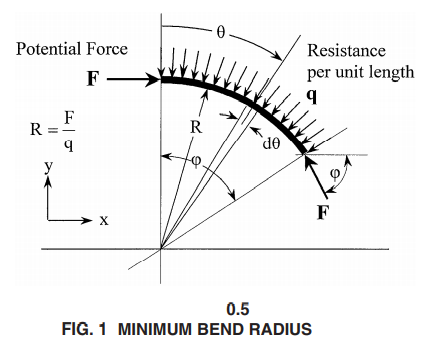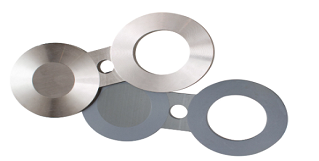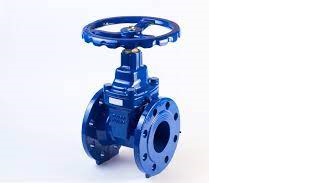A pipeline has to be routed in such a manner as to avoid any potential weak link, due to its potentially large movement. Bends are the most common weak links of the pipelines. If a bend used in a pipeline is not properly designed, the large bulging movement from the long pipeline might damage it. The radius of the bend is one of the major factors to be considered while designing a pipeline bend.
Also, while checking the interface with a pipeline, we frequently consider the pipeline as a straight line. Although the pipeline follows the route terrain, it cannot be straight in a mathematical sense. Therefore, it is important to understand under what condition the pipeline can be interpreted as a straight line mathematically.
Both of these problems are linked to the bend radius of the pipeline. Let’s understand in other words if the bend radius is large enough for every change in direction, then the pipeline is considered functionally straight. If the pipeline is functionally straight, then no unusual bulging or overstress is expected at the bends, as it does not become an obstacle to the flow of fluid.
The minimum required bend radius is determined by the balance of the potential force or anchor force, F, and the lateral resistance, q, per unit length of the pipe. Whereas for a buried pipeline, the lateral resistance mainly comes from soil resistance. The below figure shows a bend located in the middle of the line.

Now, by taking the summation of the forces in the y-direction, we can get

Where,
R = Bend Radius
F = Potential Force
q = Resistance, Per Unit Length
This is the formula for the minimum bend radius required to avoid excessive bulging at the bend and to enable the pipeline to be treated as a straight line mathematically.
Because the resistance, q, is usually different in different directions, the minimum required bend radius is different for side bends, sag bends, and over bends. For a buried pipeline, the resistance is greatest for sag bends and is smallest for over bends.

External resisting blocks can be installed at locations where space is not enough to accommodate the minimum required bend radius. The minimum required bend radius is an important parameter for pipeline design and construction.
Based on location-to-location geotechnical data, the minimum bend radius is specified for the construction. The field engineer is aware that if the bend radius is larger than the one specified for a particular bend section under construction, then no special treatment is required. Otherwise, special attention and design may be needed to ignore any damages to bend.
Note: This is the general method for calculating the minimum radius of pipeline bends. This formula and the considerations may vary in some cases.
The main difference between the piping bends and the pipeline bends is, for piping bends, we mainly consider the internal pressure of the pipe whereas, in pipeline bends, we have to consider the potential force and resistance as well. Click here to know about the piping bend or miter bend.
Introduction to Pipe Stress Engineering
Introduction to Pipe Stress Engineering: Fundamentals I & II by Stressman Engineering will give you a strong base and solid understanding of Pipe Stress Engineering and will help you solve calculations easier while enhancing your technical discussions with colleagues, vendors, and clients.
In a set of instructor-led sessions, you will learn the design philosophy of Pipe Stress. Through practical examples, the instructors will provide you a prominent course and a total overview of this fascinating discipline.
Each fundamentals course consists of 4 interactive, online live sessions.
Session recordings and related training content will be accessible through EngineeringTrainer.com
Click here to Enroll before 2021 and save € 99. and check out the video below to know more about the training and the experts who will train you.
If you know someone, who can get benefited from this training, please share with them.
Keep learning-Keep sharing!
You may also like to read
Different Types of Pipe Support Clamps & Hangers
A Presentation on Pipe Stress Analysis
Reinforcement Pad Calculation for Branch Connection
Pipe Wall Thickness Calculation For External Pressure or Vacuum
Miter Bend Calculations For Fabrication Purpose




2 thoughts on “How to Find Minimum Radius of Pipeline Bends”